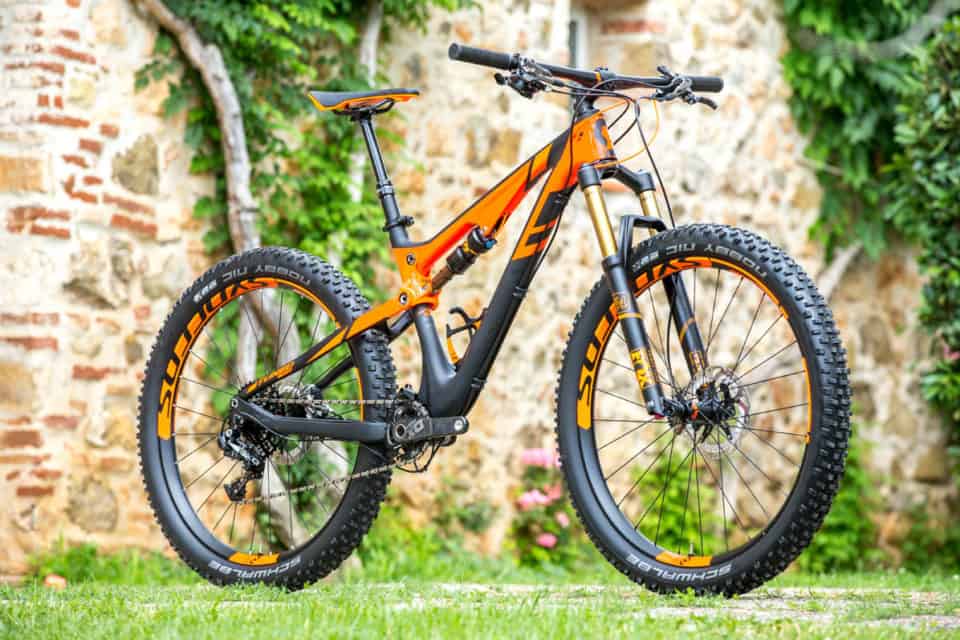


“Front suspension on a hybrid bike adds a new level of comfort and control to your rides. It absorbs shocks, smoothens rough terrains, and enhances your overall biking experience. So, if you’re seeking versatility and performance, front suspension is a valuable addition to your hybrid bike.”
Is Front Suspension Necessary On Hybrid Bike? Check Out
Features of front suspension
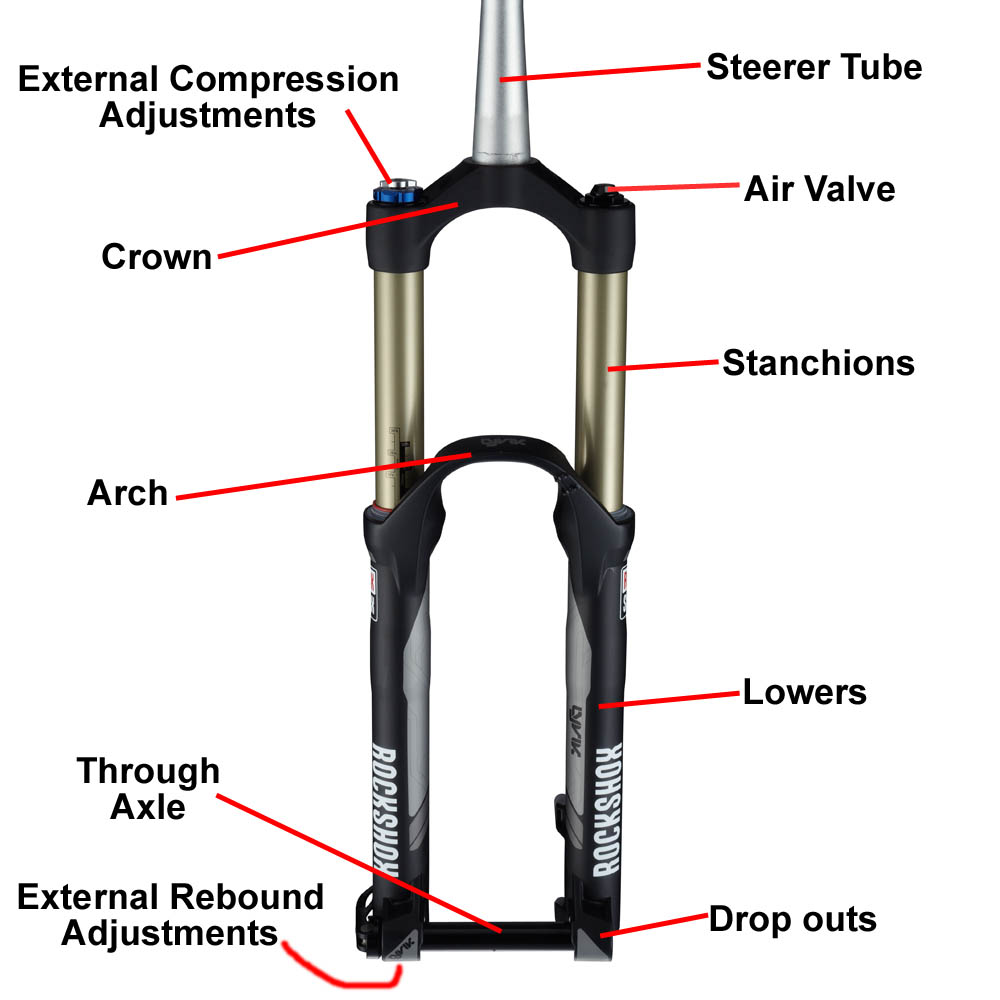


Front suspension on a hybrid bike can provide several benefits, but whether it is necessary depends on your specific riding preferences and the type of terrain you’ll be tackling.
Read More : ” Can You Ride A Mountain Bike In The Rain? “
Here are some points to consider:
Comfort:
Front suspension helps absorb shocks and vibrations from uneven surfaces, providing a smoother and more comfortable ride, especially on rough or bumpy roads.
Control and Stability:
Suspension forks improve traction and control by keeping the front wheel in contact with the ground. This can be particularly helpful when navigating loose or slippery surfaces.
Impact Reduction:
Suspension forks help reduce the impact on your wrists, arms, and upper body, making the ride less jarring and minimizing fatigue on longer rides.
Versatility:
If you plan to ride on a variety of surfaces, including gravel or light off-road trails, front suspension can enhance your ability to handle uneven terrain.
However, there are also some considerations:
Weight and Efficiency:
Front suspension adds weight to the bike, which can slightly affect pedaling efficiency and speed, particularly on smoother surfaces or during climbs.
Maintenance and Cost:
Suspension forks require regular maintenance, such as cleaning and servicing, to ensure optimal performance. Additionally, bikes with front suspension tend to be more expensive compared to rigid forks.
Ultimately, the decision to have front suspension on a hybrid bike depends on your riding style, the types of roads or trails you’ll be riding on, and your personal comfort preferences.
If you anticipate encountering rough or uneven surfaces, or if you prioritize comfort and control, front suspension can be beneficial.
However, if you primarily ride on smooth pavement or prioritize lightweight and efficient performance, a rigid fork may be more suitable.
Read More : ” Which Cycle Is Best For Mountain? “
Understanding Hybrid Bikes: An Introduction to Their Design and Purpose
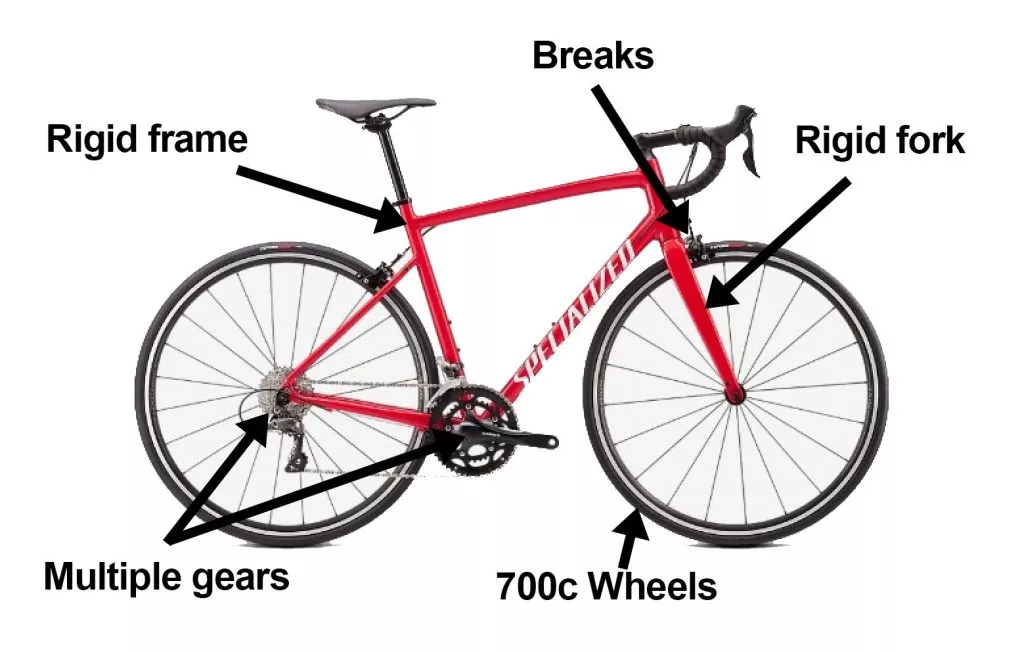


Understanding Hybrid Bikes: An Introduction to Their Design and Purpose
Related : ” Can You Mountain Bike Without Suspension? “
Hybrid bikes are versatile bicycles designed to offer a combination of features from both road bikes and mountain bikes. They are specifically built to provide comfort, efficiency, and flexibility for various riding conditions and terrains.
The design of hybrid bikes incorporates elements from road bikes, such as a lightweight frame and narrower tires, and mountain bikes, including a more upright riding position and wider tires for better stability.
These bikes are ideal for riders who seek a multi-purpose option that allows them to navigate different environments, from paved roads to gravel paths and light off-road trails.
Hybrid bikes are popular among commuters, recreational riders, and fitness enthusiasts who value a comfortable and efficient riding experience.
The purpose of a hybrid bike is to offer a smooth and enjoyable ride, combining the speed and agility of a road bike with the durability and versatility of a mountain bike.
Whether you’re commuting to work, running errands around town, or enjoying a leisurely ride on a weekend, a hybrid bike is designed to handle a variety of situations.
With their balanced design and adaptable features, hybrid bikes provide a great entry point for riders who want a bike that can handle different terrains without compromising on comfort and performance.
Whether you’re cruising along city streets, exploring scenic paths, or taking on light trails, a hybrid bike can be a reliable and enjoyable companion for your cycling adventures.
Read More : ” Do Mountain Bike Tires Have Tubes? “
Exploring Suspension Systems: The Role of Front Suspension in Bikes



Exploring Suspension Systems: The Role of Front Suspension in Bikes
Related : ” Why Are Full Suspension Bikes So Expensive? “
Front suspension is a crucial component of many bicycles, particularly those designed for off-road riding and tackling rough terrains.
It refers to the system that provides shock absorption and helps to maintain control and comfort while riding.
The front suspension consists of a fork with built-in suspension, which allows the front wheel to move up and down in response to bumps and obstacles on the trail.
The main purpose of front suspension is to enhance the rider’s experience by reducing the impact of uneven surfaces, such as rocks, roots, and potholes.
By absorbing the shocks and vibrations, front suspension helps to minimize the strain on the rider’s arms, wrists, and upper body, allowing for a smoother and more controlled ride.
This is especially important when navigating technical and challenging trails, as it improves traction, stability, and overall handling.
Front suspension also plays a significant role in maintaining contact between the front wheel and the ground, ensuring better control and traction.
It helps to keep the front wheel in contact with the terrain, allowing for improved steering and cornering capabilities.
This is particularly beneficial when navigating tight turns and technical descents, as the suspension absorbs impacts and helps to maintain stability and control.
While front suspension is highly advantageous for off-road riding, it may not be necessary or suitable for all types of bicycles or riding conditions.
Bikes designed for smooth surfaces, such as road bikes or hybrid bikes for urban commuting, typically do not feature front suspension.
In such cases, a rigid fork is used to provide a lighter and more efficient ride.
In conclusion, front suspension plays a vital role in enhancing the performance, comfort, and control of off-road bicycles.
By absorbing shocks and vibrations, it allows riders to tackle challenging terrains with greater ease and confidence. However, it’s important to note that the need for front suspension depends on the specific type of riding and terrain.
Riders should consider their intended use and riding preferences when choosing a bike with or without front suspension.
Read More : ” Difference Between Mountain Bike And Gravel Bike “
Pros of Front Suspension on a Hybrid Bike: Enhanced Comfort and Control
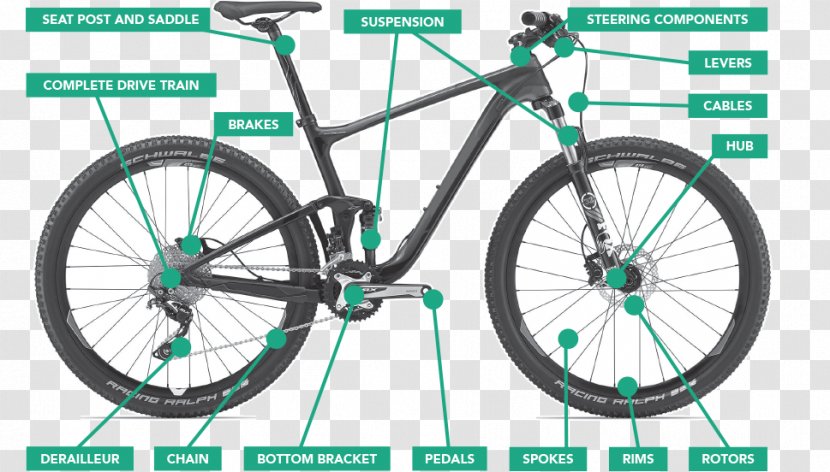


Pros of Front Suspension on a Hybrid Bike: Enhanced Comfort and Control
Read More : ” Is Downhill Mountain Biking Dangerous? “
Front suspension on a hybrid bike offers several advantages, making it a desirable feature for riders seeking enhanced comfort and control in various riding conditions.
Here are some key benefits of front suspension:
Improved Comfort:
The primary advantage of front suspension is the increased comfort it provides.
The suspension fork absorbs impacts and vibrations from uneven surfaces, such as potholes and bumps, resulting in a smoother and less jarring ride.
This is especially beneficial when riding on rough roads or off-road trails, reducing fatigue and improving overall ride quality.
Better Control and Handling:
Front suspension helps to improve control and handling, especially when navigating challenging terrains. It enhances traction by keeping the front wheel in contact with the ground, improving stability and grip.
This allows riders to confidently tackle obstacles, corner with more precision, and maintain better overall control over their bike.
Impact Absorption:
The suspension fork effectively absorbs impacts and vibrations, reducing the strain on the rider’s hands, wrists, and upper body.
This is particularly beneficial when riding over rough surfaces or encountering unexpected obstacles, as the suspension absorbs the shocks and minimizes the transfer of impact to the rider, resulting in a more comfortable and enjoyable riding experience.
Versatility:
Front suspension adds versatility to a hybrid bike, allowing it to handle a wider range of terrains and riding conditions.
Whether you’re commuting on city streets, exploring gravel paths, or venturing onto light off-road trails, front suspension provides the versatility to tackle various surfaces and adapt to changing conditions.
Confidence and Safety:
The added comfort and control provided by front suspension contribute to increased confidence and safety while riding.
The ability to handle rough surfaces and absorb impacts inspires riders to take on more challenging routes, knowing that the suspension will help them navigate safely.
In conclusion, front suspension on a hybrid bike offers numerous benefits, including enhanced comfort, better control and handling, impact absorption, versatility, and increased confidence and safety.
These advantages make front suspension a valuable feature for riders seeking a more comfortable and enjoyable riding experience on a variety of terrains.
Cons of Front Suspension on a Hybrid Bike: Added Weight and Cost
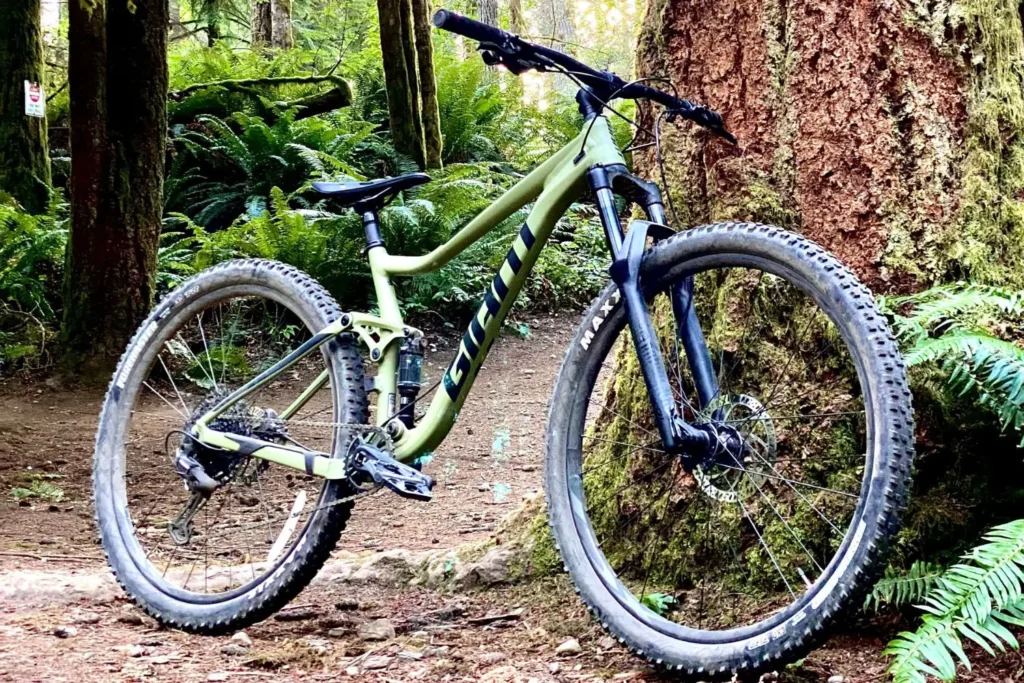


Cons of Front Suspension on a Hybrid Bike: Added Weight and Cost
Read More : ” Why Are Mountain Bikes Heavier Than Road Bikes? “
While front suspension on a hybrid bike offers several advantages, there are also some drawbacks to consider.
Here are the key cons of front suspension:
Added Weight:
One of the main disadvantages of front suspension is the additional weight it adds to the bike. The suspension fork, with its components and mechanisms, increases the overall weight of the bike.
This can make the bike feel slightly less agile and more challenging to accelerate, especially when riding on smooth and flat surfaces.
Increased Cost:
Front suspension systems are more complex and require additional components, such as the suspension fork and related parts.
This complexity and the cost of manufacturing and installing the suspension result in a higher price tag compared to rigid front forks.
If budget is a concern, opting for a bike without front suspension can be a more affordable option.
Maintenance and Service:
Front suspension systems require regular maintenance and servicing to ensure optimal performance.
The seals, oil, and other components need to be checked and maintained to prevent issues like reduced suspension travel or loss of damping.
This maintenance can add additional time and cost to the overall bike upkeep.
Reduced Energy Efficiency:
The suspension system, even when locked out, absorbs some amount of energy from the rider’s pedaling motion.
This energy loss can affect the bike’s overall efficiency, especially when riding on smooth and flat surfaces where suspension is not necessary.
For riders focused on maximizing their energy output and speed, a rigid front fork may be more suitable.
Limited Utility for On-Road Riding:
If the majority of your riding is on well-maintained roads or bike paths, the need for front suspension may be minimal.
The added weight and cost of front suspension may not be justified for these types of smooth surfaces where the benefits of suspension are less pronounced.
In conclusion, while front suspension on a hybrid bike provides increased comfort and control, there are some drawbacks to consider.
These include added weight, increased cost, maintenance requirements, reduced energy efficiency, and limited utility for on-road riding.
It’s important to assess your riding needs and preferences to determine if the benefits of front suspension outweigh the drawbacks for your specific cycling style and terrain.
Alternative Options: Rigid Forks and Suspension Seatposts for Hybrid Bikes



Alternative Options: Rigid Forks and Suspension Seatposts for Hybrid Bikes
Related : ” How Does Mountain Bike Suspension Work? “
While front suspension is a common feature on many hybrid bikes, there are alternative options that can provide some level of comfort and vibration absorption.
Here are two alternatives to front suspension:
Rigid Forks:
A rigid fork refers to a fork without any suspension components. It is a solid, fixed structure that connects the front wheel to the bike frame. Rigid forks offer simplicity, lighter weight, and more efficient power transfer compared to suspension forks.
They are well-suited for riders who prioritize efficiency, speed, and smooth surfaces, such as road riding or commuting. However, they do not provide the same level of vibration damping and shock absorption as front suspension forks.
Suspension Seatposts:
Suspension seatposts are another option for adding comfort to a hybrid bike. These seatposts have built-in suspension mechanisms that absorb shocks and vibrations from the rear wheel.
They are designed to provide vertical movement and can help reduce the impact felt by the rider, particularly when riding on uneven terrain or rough surfaces.
Suspension seatposts can be adjusted to different levels of stiffness and travel to accommodate rider preferences. They are a cost-effective way to add some level of suspension to a bike without the need for a front suspension fork.
When considering alternative options, it’s important to assess your riding preferences and the type of terrain you will encounter.
Rigid forks are ideal for riders who prioritize efficiency and speed on smooth surfaces, while suspension seatposts offer added comfort and shock absorption without the added weight and complexity of a front suspension fork.
Ultimately, the choice between front suspension, rigid forks, or suspension seatposts depends on your specific needs and the type of riding you will be doing with your hybrid bike.
Riding Style and Terrain: Assessing Your Needs for Front Suspension
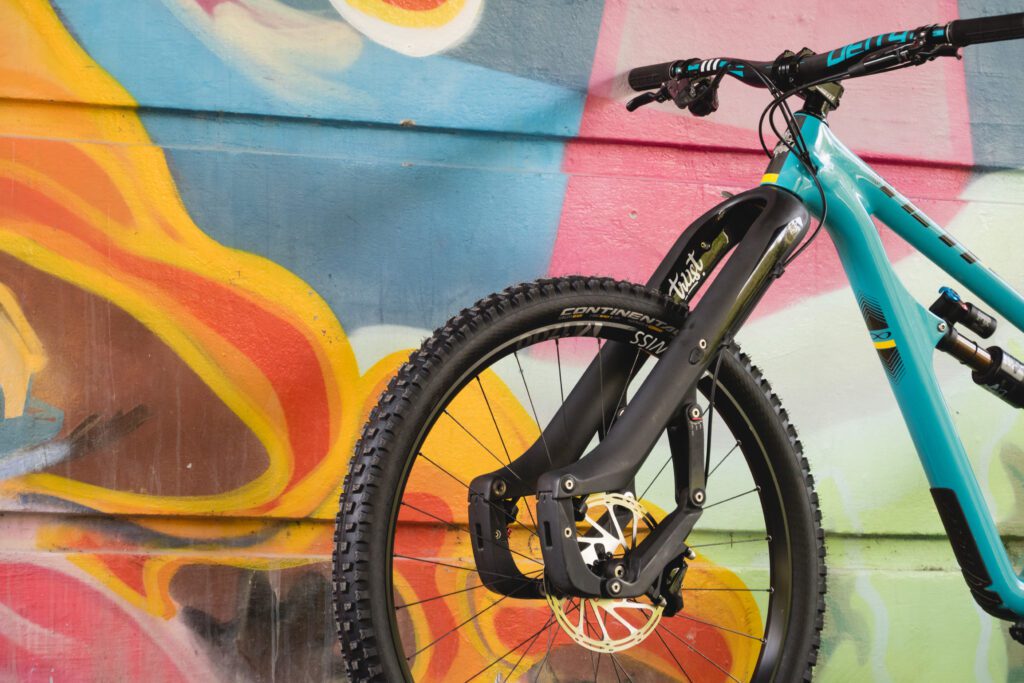


Riding Style and Terrain: Assessing Your Needs for Front Suspension
When considering whether front suspension is necessary on a hybrid bike, it’s essential to assess your riding style and the type of terrain you’ll be encountering.
Here are some factors to consider:
Off-Road Riding:
If you plan to venture off-road and encounter rough, uneven trails, front suspension can significantly enhance your riding experience. It helps absorb shocks and impacts, providing better control, comfort, and traction.
The suspension fork helps to keep your front wheel in contact with the ground, improving stability and reducing fatigue.
Comfort on Urban Roads:
Front suspension can also be beneficial for urban riding on roads with potholes, bumps, or cobblestones.
It helps to smooth out the vibrations and impacts, making your ride more comfortable and reducing strain on your wrists, arms, and upper body.
Long-Distance Tours:
If you’re planning long-distance touring or bikepacking trips, front suspension can be advantageous.
It helps to mitigate the impact of rough roads or gravel paths, improving your overall comfort and reducing the risk of fatigue.
Commuting and Light Trails:
For commuters and riders who primarily stick to smooth roads but occasionally encounter light trails or gravel paths, front suspension may not be as necessary.
In such cases, a rigid fork or a hybrid bike without front suspension can still provide a comfortable and efficient ride.
Ultimately, the decision to have front suspension on a hybrid bike depends on your personal preferences, riding style, and the terrain you’ll be tackling.
If you anticipate off-road adventures or rough surfaces, front suspension can greatly enhance your riding comfort and control.
However, for predominantly urban or smooth road riding, a hybrid bike without front suspension may still provide a satisfying and efficient riding experience.
Maintenance and Care: Keeping Your Front Suspension in Optimal Condition



Maintenance and Care: Keeping Your Front Suspension in Optimal Condition
Proper maintenance and care are essential for keeping your front suspension in optimal condition.
Here are some key steps to ensure the longevity and performance of your front suspension:
Regular Cleaning:
After every ride, clean your front suspension fork using a mild detergent and water. This helps remove dirt, grime, and debris that can affect the suspension’s functionality.
Inspection:
Regularly inspect the front suspension for any signs of damage, wear, or loose components. Check the seals, stanchions, and bushings for any leaks or cracks. Ensure that all bolts and fasteners are properly tightened.
Lubrication:
Apply suspension-specific lubricants to the stanchions and seals to keep them moving smoothly. This helps prevent friction and ensures consistent performance.
Adjustments:
Depending on your riding style and preferences, you may need to make adjustments to the suspension settings.
Familiarize yourself with the different adjustments available, such as rebound damping and compression damping, and experiment to find the right balance for your riding needs.
Suspension Service:
Over time, it’s recommended to have your front suspension serviced by a professional. This typically involves cleaning, replacing seals, and replenishing the suspension oil to maintain optimal performance.
Storage:
When not in use, store your bike in a dry and cool environment, away from direct sunlight. This helps prevent the deterioration of the suspension components.
By following these maintenance practices, you can ensure that your front suspension remains in excellent working condition, providing you with a smoother and more controlled ride.
Regular care and attention will extend the lifespan of your front suspension and enhance your overall riding experience.
Conclusion:
In conclusion, the question of whether front suspension is necessary on a hybrid bike depends on your individual riding preferences and the type of terrain you will be riding on.
While front suspension can provide added comfort and control on rougher surfaces, it also comes with certain drawbacks such as increased weight and cost.
If you primarily ride on smoother roads or bike paths, a rigid fork or suspension seatpost may suffice, offering a balance between comfort and efficiency.
However, if you plan to tackle more challenging off-road trails or encounter uneven surfaces, front suspension can greatly enhance your riding experience by absorbing shocks and providing better traction.
Ultimately, it is important to assess your specific needs, consider your riding style and the terrain you will encounter, and make an informed decision about whether front suspension is necessary for your hybrid bike.
FAQ’s:
Do I need a bike with front suspension?
Whether you need a bike with front suspension depends on your riding preferences and the terrain you’ll be tackling. It can enhance comfort and control on rough surfaces, but may not be necessary for smooth roads.
Does a hybrid bike have front suspension?
Not all hybrid bikes have front suspension. Some hybrid bikes are designed with rigid forks for a more efficient and lightweight riding experience on paved surfaces.
Does front suspension make a difference?
Yes, front suspension can make a significant difference in providing a smoother and more comfortable ride, especially when encountering rough or uneven terrain.
Do you need a suspension fork on a hybrid bike?
While not mandatory, a suspension fork can enhance the riding experience on a hybrid bike by absorbing vibrations and shocks, particularly when riding on rough or bumpy surfaces.
What is the importance of front suspension?
Front suspension is important as it helps absorb impacts and shocks from uneven terrain, providing a smoother and more comfortable ride, improved control, and better traction on rough surfaces.



Welcome to Bikegenics, where passion meets performance! We are a leading online destination for all things related to mountain biking, dedicated to providing you with top-notch gear, expert advice, and an immersive community to fuel your two-wheeled adventures. With a commitment to excellence and a deep love for the sport, we strive to elevate your biking experience to new heights.
